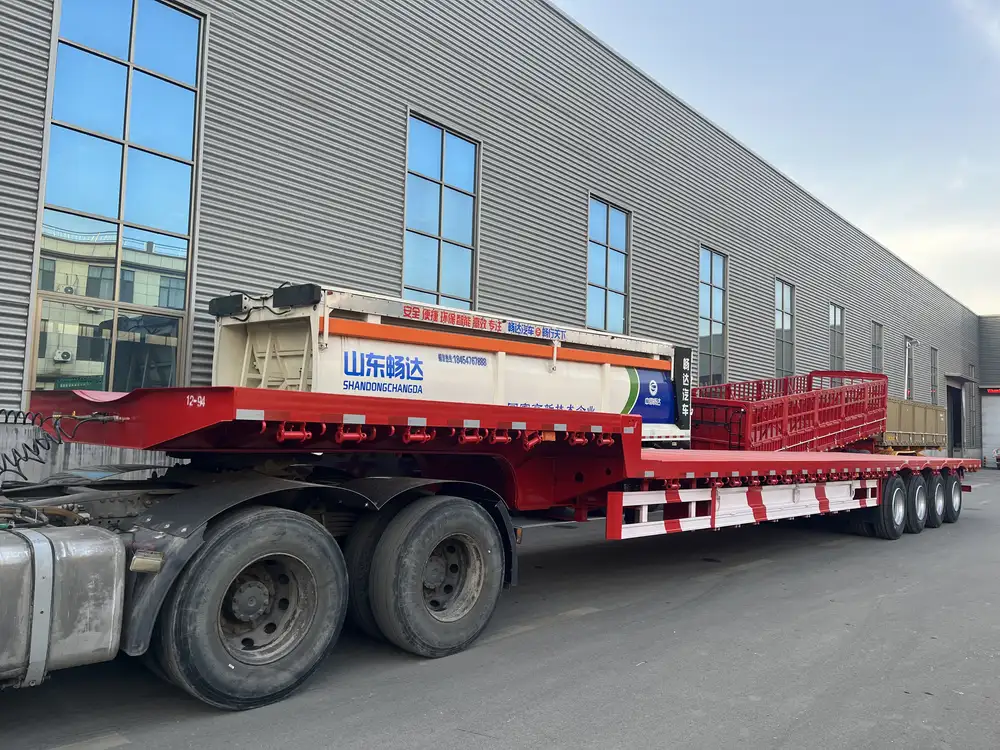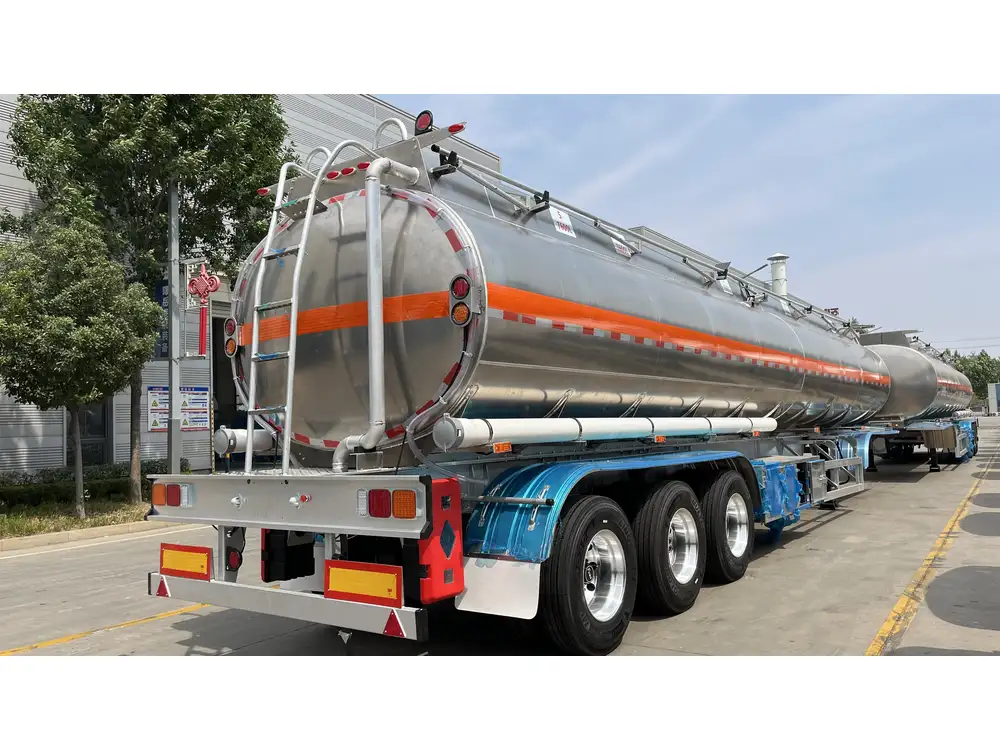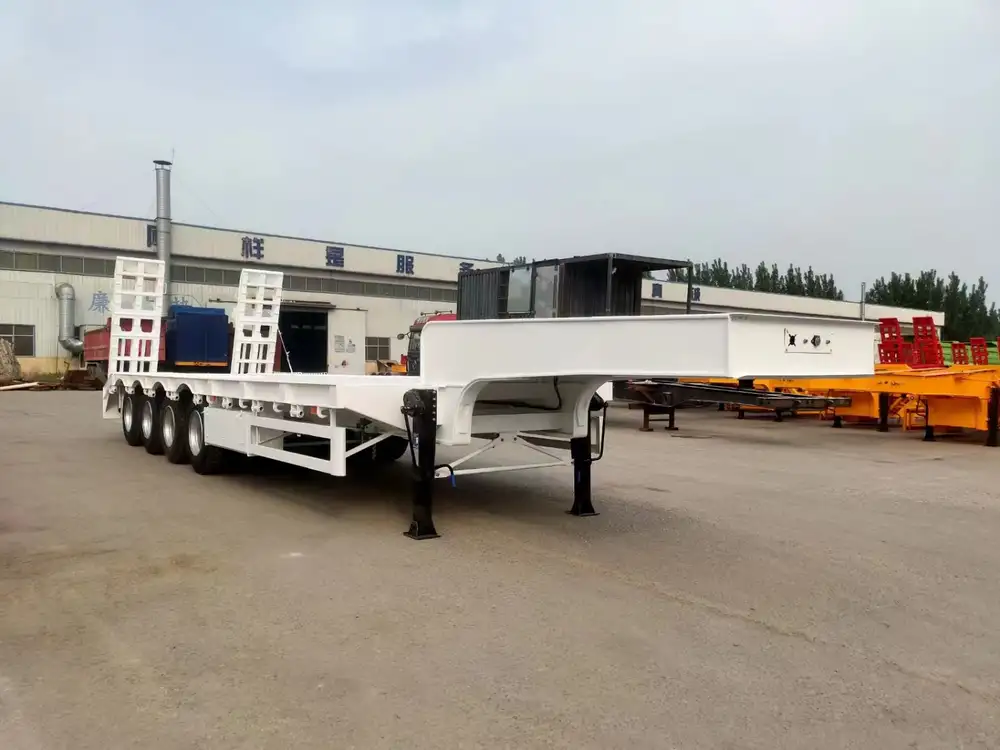Flatbed trailers serve as vital infrastructure in logistics and transportation, their versatility allowing for the transportation of a diverse array of goods. Among the myriad of questions concerning flatbed trailers, one particularly pressing inquiry is: How tall is a standard flatbed trailer? In this article, we will delve into the nuanced dimensions, standards, and regulations governing the height of flatbed trailers, providing a thorough understanding tailored for manufacturers, transporters, and industry stakeholders.
The Importance of Trailer Height in Transportation
Trailer Design and Its Structural Impact
The height of a flatbed trailer is crucial not only for compliance with transportation regulations but also greatly influences its loading capacity, stability while in transit, and overall efficiency in cargo placement. A flatbed trailer generally facilitates easier loading and unloading from multiple angles, including from the top, but the height must be optimized to avoid unnecessary obstacles and ensure seamless transport.

Compliance with Federal and State Regulations
In the United States, the Federal Motor Carrier Safety Administration (FMCSA) outlines maximum height restrictions, which typically do not exceed 13.5 feet (or 162 inches) from the ground to the top of the trailer. However, nuances in specific states’ regulations may impose stricter height limits based on local conditions, routes taken, and infrastructure (like bridges). For instance, some states may allow for a maximum trailer height of 14 feet, but this requires careful evaluation against route-specific restrictions.
Standard Dimensions of Flatbed Trailers
Overview of Common Flatbed Trailer Types
Standard Flatbed Trailers: Typically used for transporting lumber, machinery, and other dense loads. The height is often around 5 to 6 feet measured to the deck.
Step Deck Trailers: These designs feature a lower deck that allows for transporting taller loads while remaining compliant with height restrictions. They may have a height of 3 to 4 feet at the front and taper to about 1 to 2 feet at the rear.
Double Drop Trailers: Notable for their two lower sections, these trailers can significantly reduce overall height, typically meeting the low-profile demand of specific cargo. Heights can be as low as 2 to 3 feet at the deck.
| Type of Trailer | Typical Height | Use Case |
|---|---|---|
| Standard Flatbed | 5 – 6 feet | Lumber, machinery, equipment |
| Step Deck | 3 – 4 feet (front), 1 – 2 feet (rear) | Tall cargo that requires specific height regulations |
| Double Drop | 2 – 3 feet | Specialized low-profile transport |

Height Specifications by Manufacturer
Different manufacturers may have slight variations in their height specifications based on design, materials, and intended use. For instance, while a standard flatbed trailer might average at 5.5 feet, some manufacturers might design models that are only 5 feet tall to boost ease of loading for specific types of cargo. Notably, it’s essential for users to consult detailed manufacturer specs — including load ratings and height adjustments — to select the most suitable trailer for their needs.
Factors Affecting Height Choices in Flatbed Trailers
Load Types and Cargo Dimensions
The nature of the goods being transported plays a fundamental role in determining optimal trailer height. For example:
Heavy Equipment Transport: When moving construction machinery or heavy vehicles, lower deck configurations like step decks or double drops can accommodate greater heights, which facilitates compliance with safety regulations.
Lumber and Building Materials: Bulk loads often adhere to traditional flatbed designs that leverage standard heights for stacking materials securely.
Oversized Freight: When transporting unusually tall loads, specific permits and lower trailers may be mandatory to navigate height restrictions in certain jurisdictions.

Road Conditions and Infrastructure
Roadway conditions can govern height requirements. For example, certain routes with numerous bridges may require lower profiles to avoid accidents. Proper planning and equipment selection ensure compliance and minimize logistical challenges, which is essential for maintaining timelines and operational efficiency.
Safety Considerations
Often overlooked, safety regulations dictate that cargo must not exceed the trailer height, which varies based on the specific load and its arrangement. Distributing weight evenly while adhering to height specifications is paramount. For instance:
Load Securement Techniques: Proper tie-down and bracing techniques must be employed to maintain the integrity of the load and prevent sudden shifts in height during transport.
Vehicle Height Awareness: Drivers must be trained to understand the dimensions of their vehicles concerning height—especially while maneuvering in areas with overhead obstructions.
Challenges of Transporting Tall Cargo

Increased Permit Requirements
Transporting loads that exceed standard height specifications often necessitates obtaining special permits. This may include:
State-Specific Height Permits: Many states require unique permits if the load exceeds standard limits, typically demanding a review of the intended route.
Escort Requirements: For particularly tall loads, pilot cars or escorts may be necessary to navigate complex routes safely while ensuring compliance.
Overall Risk Management
Transporters need to engage in proactive risk management, ensuring that trailers are adequately equipped and structured to handle loads without compromising safety. Here are some strategies:
Regular Maintenance Checks: Ensuring the trailer’s height-adjustment mechanisms and load-management features are functioning at all times.
Communicating Route Constraints: Drivers should be informed about waiting clearance heights and critical pathways to minimize blind spots in driving decisions.
Conclusion: Choosing the Right Flatbed Trailer Height
Understanding the height parameters for standard flatbed trailers is essential not only for compliance and safety but also for optimizing logistics effectiveness. By carefully assessing cargo needs, state regulations, and manufacturer specifications, stakeholders can select the most efficient trailer setup.

Key Takeaways
- The standard height of flatbed trailers typically ranges between 5 to 6 feet.
- Variations exist with different trailer types; consider step decks and double drops for specialized needs.
- Strict adherence to local regulations, safety protocols, and cargo dimensions will lead to better operational outcomes and decreased risks during transportation.
Choosing the correct flatbed trailer based on height can significantly enhance your operational efficiency and contribute to a smoother transportation experience from start to finish. By leveraging the above insights, stakeholders can position themselves advantageously in the dynamic arena of logistics and transportation.



